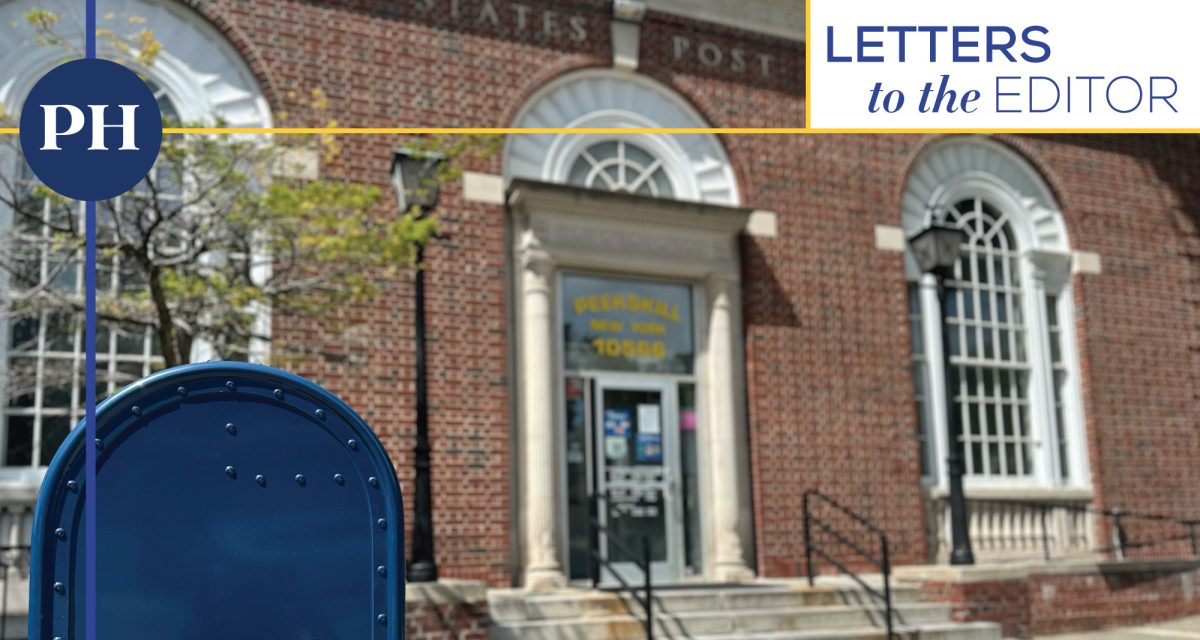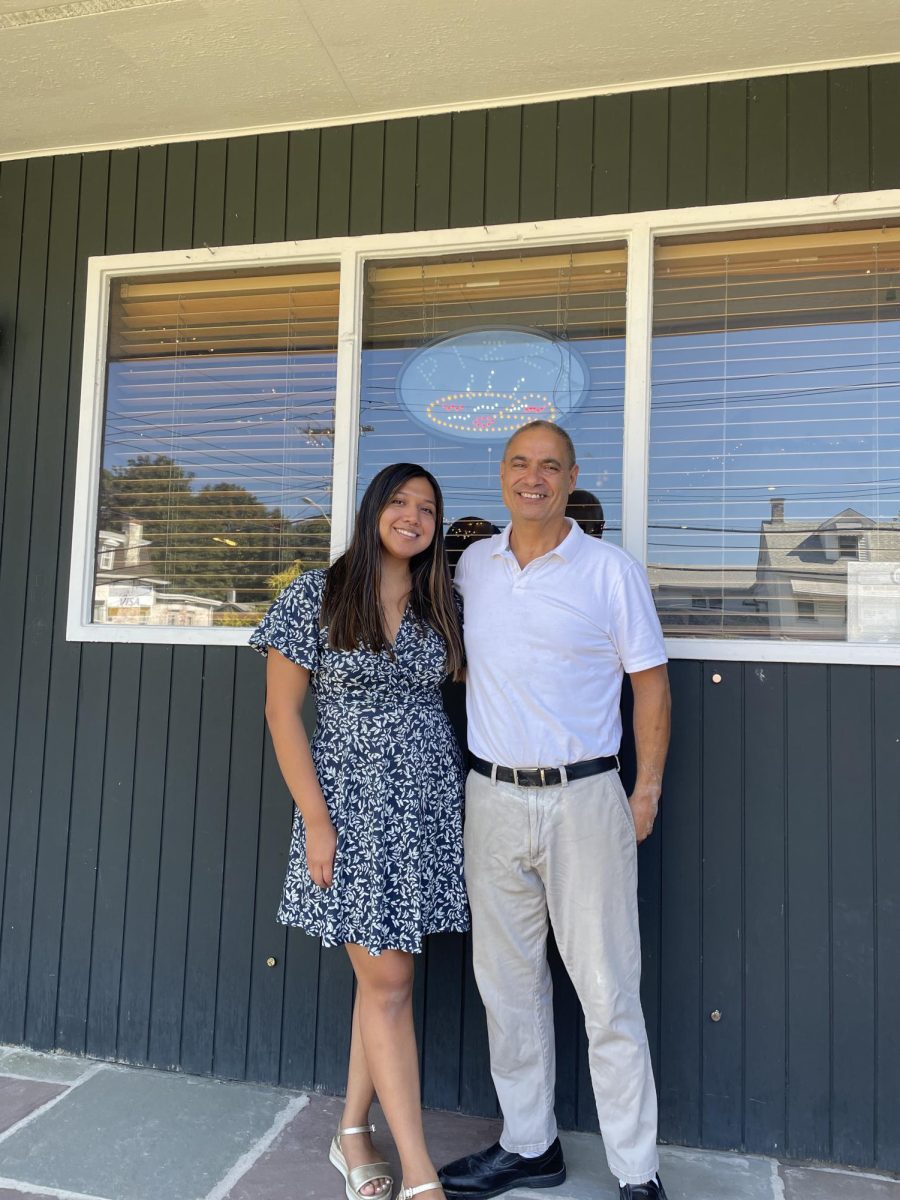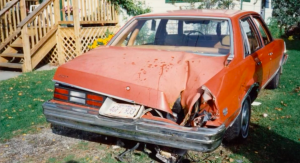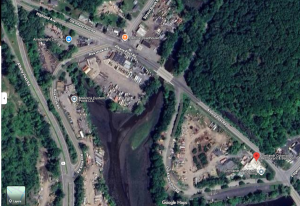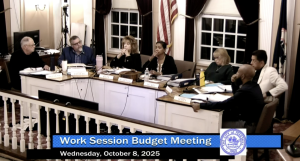Ideas, Opinions, Criticisms and Need for Connection to History Dominate Ginsburg meeting
Developer of Railroad Avenue Property Heard from Residents
May 25, 2022
Amidst the elegance of the former convent transformed into a luxury hotel by the Ginsburg Development Corporation (GDC), residents spoke passionately Tuesday night about the company’s proposed Peekskill Landing project on Railroad Avenue.
About 100 residents drove up John Street to the Fort Hill neighborhood and entered the Highlands Ballroom, once the chapel, at the Abbey Inn & Spa to watch a slide presentation from GDC representatives and ask questions of the Westchester developer. Martin Ginsburg, founder of the company, was not present but was referenced throughout the evening.
Of the 25 people who spoke during the two and a half hour meeting, roughly half were in favor of the project, but wanted to see its design reflect Peekskill’s industrial heritage. Chief among the concerns was the look of the project – the current renderings fail to convey Peekskill’s distinctive historical architecture. The buildings need to echo Peekskill’s history as a manufacturing center of stoves and bricks, said Gene Panczenko. “This is cookie cutter as a type of architecture. When someone gets to the train station they should see a building that looks like it’s been here a long time.”
“I don’t think this project should be stopped dead in the water because the greater good outweighs the concerns, but we can have a building we more or less agree on,” he said.
Another speaker, Ingrid Whitman, raised the issue of equity and spoke about the renderings of the buildings depicting white people with luxury cars, saying that is not an apt description of Peekskill, asking rhetorically if that was Martin Ginsburg’s vision of Peekskill or Peekskill’s vision.
Whitman called the riverfront the great equalizer. “It belongs to all of us and when Martin Ginsburg builds something, his imprint comes into a community.” Jim Surdoval, who led the presentation, replied that Ginsburg developments have strengthened communities and specifically referred to Haverstraw, the poorest community in Rockland county. He also referenced census data showing that Peekskill’s median income had decreased. “Higher incomes strengthen the community.” He explained that every place Ginsburg’s developed he’s been welcomed back. “That’s his reputation,” Surdoval said to audience applause.
Whitman’s reference to the tone deafness around the renderings was revisited later in the evening by Amy Wiggins, who mentioned that the general monthly meeting of the NAACP was being held simultaneously, adding that she would like to see an effort to involve everyone in the community in the shaping of the project. “It’s important to bring people in, history is important to Peekskillians.” Another comment, from Conor Greene of Peekskill Walks, asked why the meeting was held at the Abbey Inn at Fort Hill and not in the downtown where there would’ve been easier access for residents.
In Surdoval’s presentation, he led the audience through Ginsburg’s 20-plus year history in Peekskill, mentioning how he rescued a failed development (Chapel Hill) and brought it to completion. The first image showed the five Ginsburg developments in Peekskill, River Bend, Gateway Townhomes, Fort Hill Apartments, and the Abbey Inn & Spa.
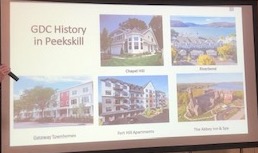
Surdoval spoke to 87-year-old Martin Ginsburg’s desire to add one more assemblage at this stage of his 50-year career, saying Peekskill Landing would be his legacy project and “complete his career.”
The next few slides concentrated on the current appearance of the area on Railroad Avenue across from the train station. “It’s a hodge podge and not particularly attractive,” said Surdoval.
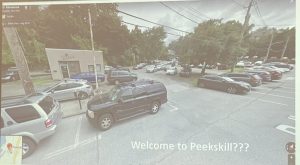
Illustrating Ginsburg’s vision of a transit oriented retail and residential hub at the train station, a slide included Gertrude Stein’s quote, “There is no there, there.” This understanding was illustrated by a number of the speakers who lined up at a single microphone to ask questions and comment. One speaker said he had friends and colleagues get off the train and remark about what greeted them at the train station – nothing.
It was explained how the parcels of land that Ginsburg has acquired over the past 20 years are not a flat site and the significant grade drives the design. Ginsburg was looking to make a statement, said Surdoval, and so a 14 story high rise with 276 units was pitched. “Something that could be seen from the river and show Peekskill’s comeback,” said Surdoval.
That original version didn’t sit well with the Common Council, he explained, so the company came back with another iteration – a mid rise with 9 stories and 205 units. This also didn’t appeal to the Council, so GDC was sent back to the drawing board a second time. “There needs to be a critical mass of units to make the site work,” explained Surdoval.
Later in the evening he referenced the amount of retaining walls and drainage solutions that will go into building the project. “There is a need to make the numbers work to have the project be economically viable.”
The third iteration, the one currently before the Common Council seeking a zoning text amendment to allow extra height beyond the current law, involves two buildings. One building is on South Street at five and a half stories; and a second Railroad Avenue building at four stories – for a total of 186 rental apartments consisting of studios, one and two bedroom units.
Another aspect of the project is the development of a passive park at the corner of Requa and South Street for public use, and a rooftop garden on the Railroad Avenue building for private use of the residents. A concern was raised by a speaker later in the evening about how contemplative the passive park would be within earshot of Route 9, while a different speaker raised the possibility of building a parking structure there for additional parking.
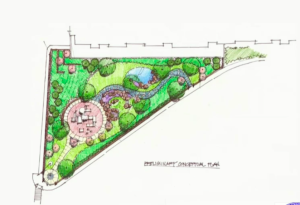
Questions about the loss of the 53 parking spaces in the city owned lot took up a significant portion of the meeting. In order for the project to proceed, the city would have to sell the lot to GDC. The project’s architect explained how the parking spaces would be not be lost, but would be incorporated into the Railroad Avenue building and along Requa Street.
Sepp Spenlinhauer thanked Ginsburg representatives for hosting the evening, and said that having feedback will make it a better project. He noted small pieces of Peekskill’s character being taken away (by new development) and how it’s difficult to value them. One such piece is the view of the river from South Street near Requa. “There could be amenities for all income levels,” he suggested, to audience applause.
Spenlinhauer spoke of his participation in a design charrette for the 645 Main Street street project that is currently rising along Central Avenue, and suggested Ginsburg employ the same principle of bringing members of the community together to work on facade design. “There are 20 shades of vintage brick looks available,” he said, and applauded the green roof on the Railroad Avenue building.
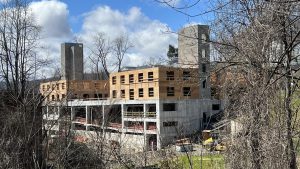
The environmental impact of Peekskill Landing was a subject referenced by many of the speakers, noting the projected increase in traffic and potential infrastructure disruption. Marie Inserra of Peekskill’s Conservation Advisory Council asked how many people would be moving to Peekskill as a result of this development, and when Surdoval said approximately 300, she said there was no way something of this size isn’t going to have an impact. “Preservation of the view is crucial, and the city needs to tell developers the view is for everybody.”
Jan Melillo, another member of the Conservation Advisory Committee, spoke of Peekskill being an environmental justice community, saying that the city carries more than its share of negativity around air, noise and light pollution. In the presentation at the beginning of the evening, Surdoval referenced the green initiatives of Peekskill Landing, explaining how it would use no fossil fuels for heating, and incorporate solar panels on the roof, along with electric vehicle charging stations.
In keeping up with changing trends, all the parking will be built to be convertable to e-charging when needed, said Surdoval. He also referenced the need for amenities that reflect how our society has evolved regarding shopping. Noting that anywhere from 150-200 packages would be delivered daily for residents, he mentioned that the building would have a package receiving room. And explaining that in the hybrid model that now constitutes the work world, people who spend a few days a week working from home need a business environment where they live, not necessarily in their apartments, but in their building, Surdoval told the audience the complex would include shared work spaces for residents. “These types of amenities add to the cost of a market rate apartment,” he said.
Conor Green asked Surdoval if the developer was applying for Payment In Lieu of Taxes (PILOT), and Surdoval said “no market rate project can exist without it.” He explained that PILOTs help the developer in the early years achieve stabilization and that they are effectively a schedule of tax increases that escalate year after year.” He also noted that social good, in the form of infrastructure improvements, come about as a result of PILOTs.
In the area of social good for the community, Green pointed out some areas around South Street are begging for upgrades, both aesthetic and structurally. He suggested the highway exit from Route 9 south to South Street could be upgraded as well as the intersection under Route 9. “Expand your scope” said Greene.
In regard to the retail aspect of the development, Brian Orsi, owner of Bucko!, a downtown retail shop, asked about the square footage of the retail space on Railroad Avenue and encouraged Ginsburg to reach out for local retailers. “You believe in authenticity; we don’t want you to create the geography of nowhere,” said Orsi. “A wonderful example is the phenomenal history of the riverfront, and the appearance of that in the project could resolve people’s concerns about the project.”
Frederick Dennstedt, creator of Peekskill Exurbanist, noted the comment from Surdoval about authenticity and said there are a lot of great ‘hooks’ already here. He referenced the building that houses the Bruised Apple Bookstore on Central Avenue, and many of the historical homes. “There should be a connection to history keyed into the new and not thrown away, but respecting the history. Make an agreement with history. It’s all about community. A project like this gets me excited.”
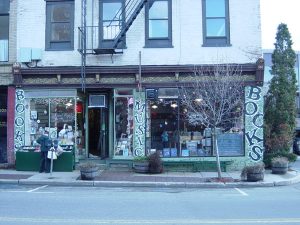
There was a lot of conversation around change and the need for things to get better. “We need people walking around here, not just on weekends,” said Lou Lanza who owns restaurants at the other end of the Railroad Avenue block. John Sharp, owner of Birdsall House in the downtown, echoed Lanza’s comments. “Small businesses are struggling. We need help,” He also was clear, “I have no delusions on this. I own The Central across the street from this,” but please continue to listen to your community, he urged.
A five-year resident of Peekskill, Cathy Steger, said she moved from an area of New York State that’s “dying” (Chautauqua), and she sees such potential here. “I know that things change and change is hard. I don’t want to see Peekskill die. This is a great opportunity. I learned a lot here tonight from the people.”
At the conclusion of the meeting, there was a sense that many attendees hoped Ginsburg representatives had also learned from the event.

Care about Peekskill? Want to keep informed about how this city is changing? Support local journalism with a monthly contribution here.




